10 Best Art Selling Platforms to Launch Your Business in 2025
Looking to sell your art online in 2025? It doesn’t matter if you are a beginner or an established artist. Selling art online depends on which platforms you select to take your art business to a new level of profitability.

art selling platforms
Why Are Art Selling Platforms a Game-Changer for Modern Artists?
The art world isn’t what it used to be. Gone are those days when artists depended on galleries, middlemen, and exhibitions to get noticed. Thanks to art selling platforms, today painters, digital illustrators, AI artists, and complete beginners alike can sell their work directly to buyers from anywhere around the globe. The internet revolutionized how artists make a living, opening opportunities that didn’t exist just a decade ago.
With the many alternatives before you, where do you even start? Selling art online for beginners could be rather overwhelming in terms of pressure when it means looking through a dozen platforms, pricing, and marketing tactics. Should you sell digital art or stick to physical prints? Is it worth trying out AI-generated artwork, or will buyers reject it?

This is the right guide for you if you ever wondered how to start selling art. Here, you will find every step-by-step detail from the best platform selection to setting up your first store. We will also look into how both traditional and technologically adept artists are using art selling platforms to profit from their passion.
And yes, even selling AI art has created its niche in the market. Be it the creation of an artwork featuring neural networks or simply enhancing your design with AI-payed tools, it does cater to the demand when it comes to unique structures of the futuristic era. Instead, before moving on to specifics, let us find some time to explore why online art sales have soared so much in popularity.
How to Make Money Selling Art?

A lot of artists wonder: how much money can you make selling art online? The answers aren’t one-size-fits-all, however. Your income depends on several factors. These include your skill level, pricing strategy, the platforms you use, and last but not least, the marketing of your work. Some make a few extra dollars each month, while others earn six figures a year.
What Factors Affect Your Art Income?
Various factors do stand to dictate the amount of money you can earn from selling art online:
Type of Art
Original sequences and sculptures sell at higher margins than prints or digital. However, these take far longer to roll out.
Sales Volume
Many affordable prints can equal selling very few high-end originals.
Marketing Strategies
Artists updating their social networks and good SEO listings tend to sell more art.
Platform Choice
Some selling venues often could charge higher fees, while others with much better exposure might actually charge lower rates.
The Size of the Audience
The larger your audience’s place, the easier it is going to be to generate constant sales.
How to Start Selling Art: A Step-by-Step Guide

Now, when it comes to selling art successfully, there are some ways to follow that may just turn a passion into profit.
1. Choose the Right Art Selling Platform
There are dozens of options, each catering to different types of artists. While some platforms are great for traditional painters and photographers, there are others specialized in selling digital art or even AI-generated artwork.
Beginning with a platform that is just as easy to set up, with a built-in audience, is always suggested by many selling art online for beginners’ guides.
2. Set Up Your Online Art Store
Once you’ve picked a platform, it’s time to create your shop. For selling digital art, make sure your files are formatted correctly and ready for download. If you’re offering limited edition prints, clearly state how many copies will be available.
3. Value Your Art Strategically
Pricing one’s work is among the hardest challenges new creators face when beginning their careers. Not finding the true value of one’s products set the creators on a path toward complete burnout. However, overcharging for their work means never gaining a sale again. A reasonable way out can be to have discount prints set opposite to high original work. Find the middle ground between the two.
4. Market Your Artwork Like a Pro
Even the best art selling platforms will not guarantee any sales if no one knows your art exists. Marketing is vital. From social media to e-mail newsletters to collaborating with other artists, get your work in front of the targeted audience.
For the young beginners, starting with Instagram, Pinterest, and TikTok will help build their followings. These are visually driven sites and are ideal for presenting most artworks, behind-the-scenes happenings, and directing traffic to the online store.
5. Stay Consistent and Keep Learning
Success in selling art from home for a beginner does not happen overnight. This takes quite a while to build a reputation and get clientele to return. Go ahead and create your other works of art. Use various platforms and new ways to market yourself. The more of your energy you direct to developing your art business, the more rewards it will give you in the future.
Using techniques that work, selling digital art and other traditional works online can become, with patience, a sustainable and profitable venture. The next focus will be on the 10 best art selling platforms in 2025. So, you can find the most suitable platform to display your creations.
The 10 Best Art Selling Platforms in 2025
Choosing an art selling platform is critical for success. No matter if you are a traditional painter, digital illustrator, or AI artist. The right marketplace could help you reach your ideal audience and maximize earnings. In 2025, there seem to be even more platforms than before, each catering especially to different types of artists.
1. Etsy—Best for Handmade and Digital Art
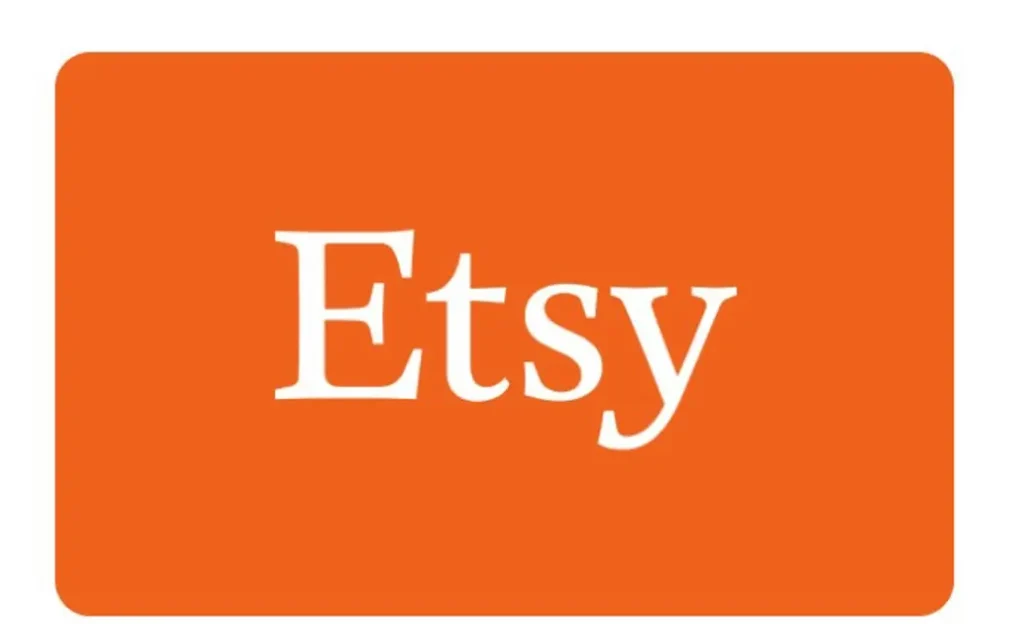
It has been a favorite for artists for many, many years. This marketplace is excellent for handmade goods, digital art, and even art prints. The platform can offer both an audience and the best tools that artists could use to promote their products.
Pros:
- It has a very large base of buyers is looking for unique artwork.
- The platform provides support in selling physical and digital art.
Cons:
- There might be tough competition, making it hard to stand out.
- The transaction fee is 6.5% from every sale.
Best for: Artists who sell custom prints, original paintings, or digital art downloads.
2. Singulart—Best for Professional Artists
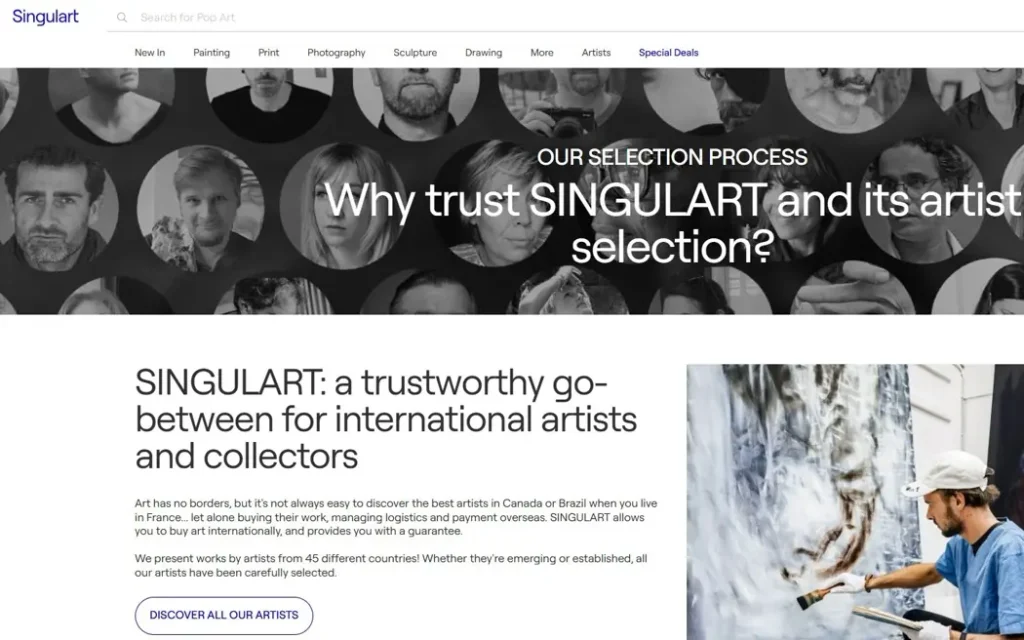
It is a high-end art selling platform that services serious collectors. It focuses more on fine art and original paintings than on mass-market prints.
Pros:
- Attractive to serious art buyers who will pay high prices.
- Strong promotional support goes to the artists.
Cons:
- A strict application process makes it difficult for beginners to get accepted.
- Commissions can be steep.
Best for: Professional artists wanting to sell original paintings and high-end artwork.
3. Saatchi Art—Best for Fine Art and Original Pieces

This online gallery provides a unique platform for serious collectors of original artworks. It enjoys great interest from painters, sculptors, and photographers selling original artworks and limited-edition prints.
Pros:
- Exposure to an international audience.
- Packaging and shipping logistics for artists handled by the site • Curation of all the artworks on the site for quality.
Cons:
- 35% commission on sales.
- Not good for selling digital artwork.
Best for: painters, sculptors, and photographers selling their original, high-value artwork.
4. Redbubble—Best for Selling Prints and Merchandise
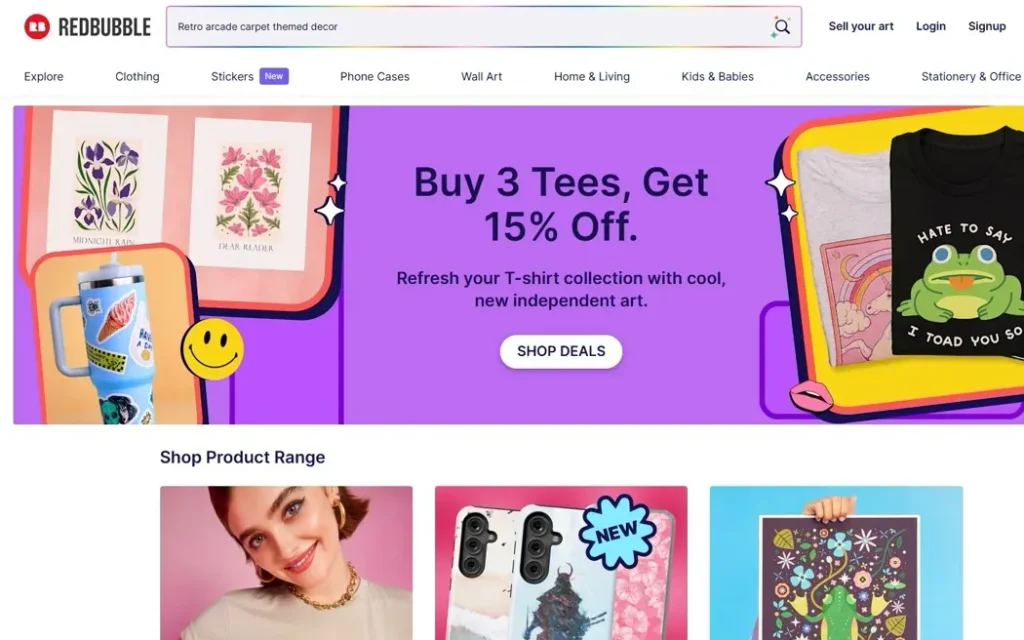
It is a print-on-demand marketplace where artists can sell their designs on various products, including T-shirts, phone cases, and posters.
Pros:
- No upfront cost, as Redbubble does the printing and shipping.
- Passive income potential. Poorly suited for branding—implementing artists.
Cons:
- Profit margins can be low compared to selling direct.
- Less control over branding.
Best for: Digital artists seeking to sell designs on products without paying inventory involvements.
5. Society6—Best for Trendy and Affordable Art
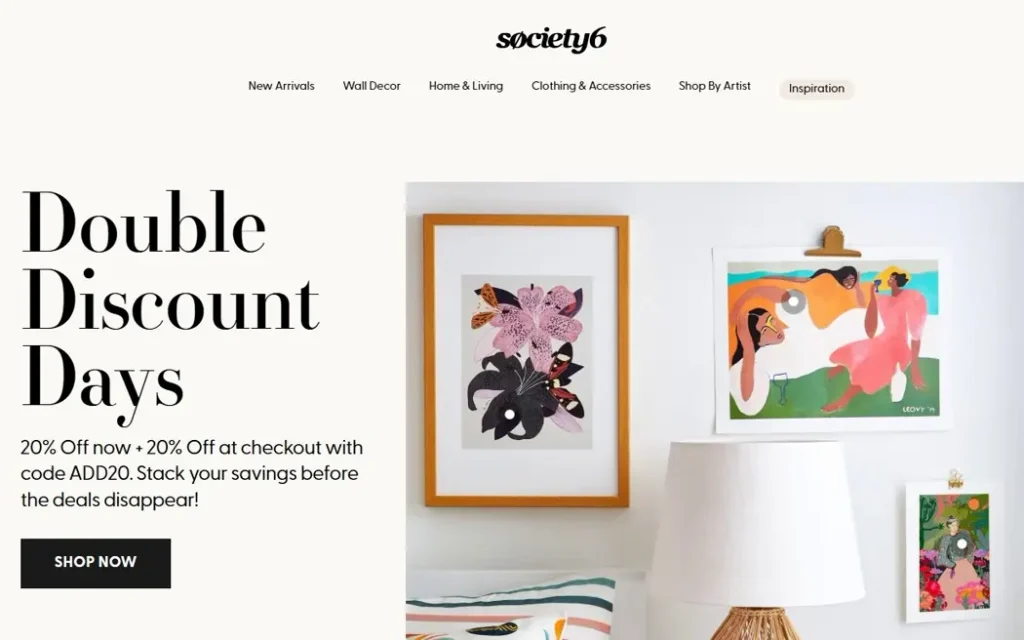
This platform allows artists to sell their designs to a primarily younger audience. It operates very much like the earlier mentioned Redbubble. Society6 focuses on art prints, along with merch involving art on a variety of home decor items.
Pros:
- No need to worry about fulfillment or shipping.
- User-friendly interface: Artists earn royalties on every sale.
Cons:
- Artists receive little for each sale.
- Few marketing tools for artists.
Best for: Artists looking to sell digital prints, home decor, and apparel featuring their artwork.
6. ArtStation—Best for Digital Artists and Illustrators

A platform for concept artists, illustrators, and game developers, it’s undoubtedly the most popular. One could sell digital or physical products here.
Pros:
- There is a huge audience that knows about digital art.
- The marketplace sells digital artwork files.
Cons:
- Not so good for classic artists.
- Probably would have strong competition from already established digital artists.
Best for: Concept artists, game developers, and digital artists looking to sell prints or tutorials.
7. SuperRare—Best for Selling AI Art and NFTs
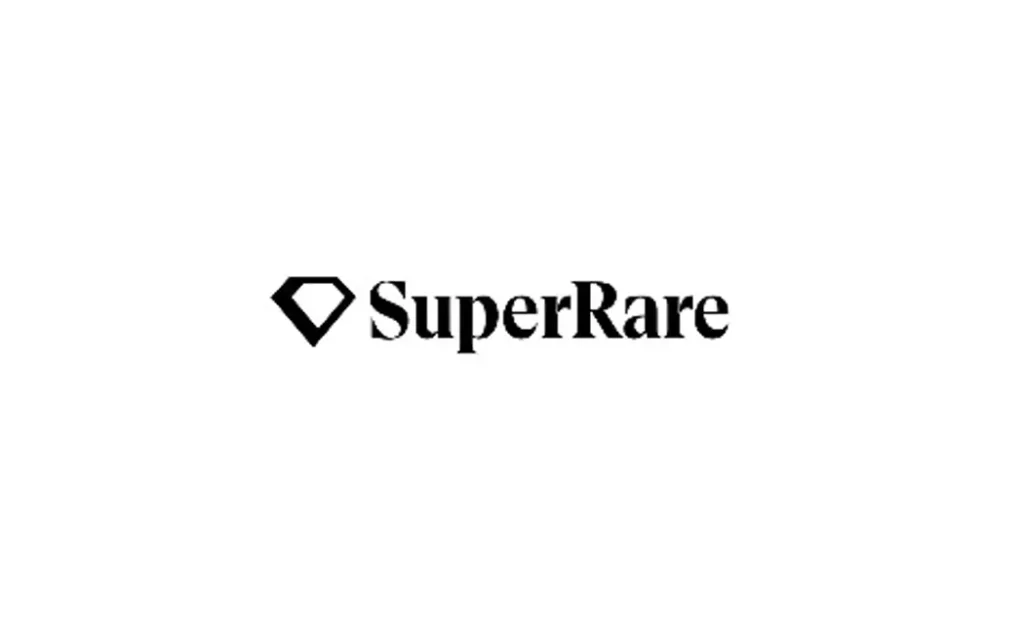
One of the best NFT marketplaces where artists may sell blockchain-verified digital art, including AI-generated artworks.
Pros:
- Authenticity availed by blockchain technology.
- A great place for selling A.I. art and innovative digital works.
Cons:
- Knowledge of cryptocurrencies is desirable.
- Market volatility may affect the sales.
Best for: The artists who want to sell out NFTs and AI-generated artwork.
8. Displate—Best for Metal Prints
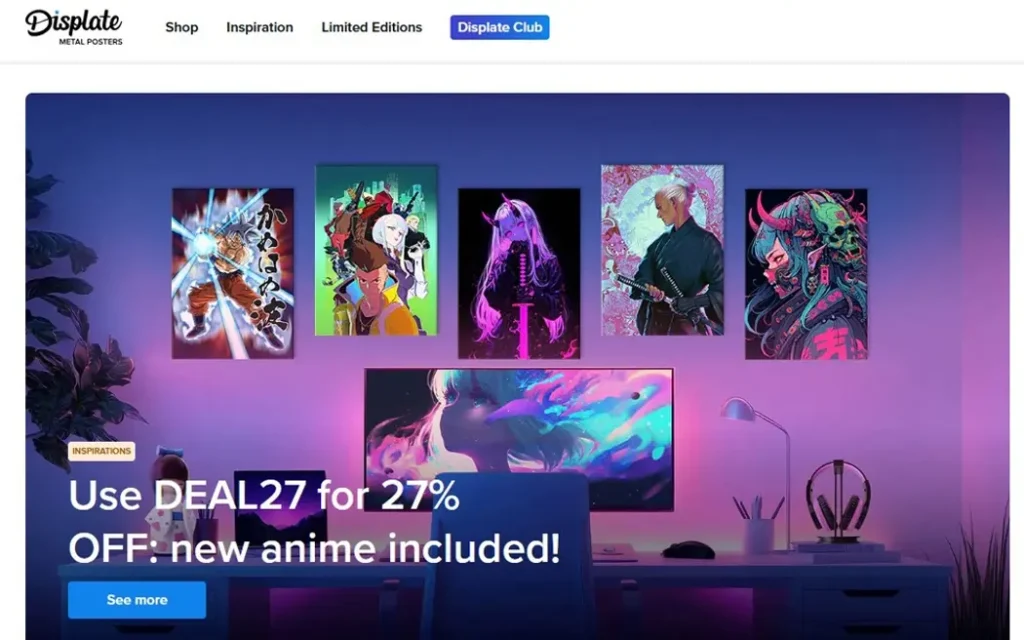
It is a unique platform selling fabulous artwork as metal prints. The site allows artists to upload their work, while Displate takes care of the production and shipping process.
Pros:
- No need for inventory management.
- Highly collectible quality prints.
Cons:
- Limited to metal prints.
- Needless to say, a competitive marketplace.
Best for: Artists creating bold, poster-style artwork that can best be done on everybody’s favorite surface—metal.
9. DeviantArt Marketplace—Best for Independent Artists
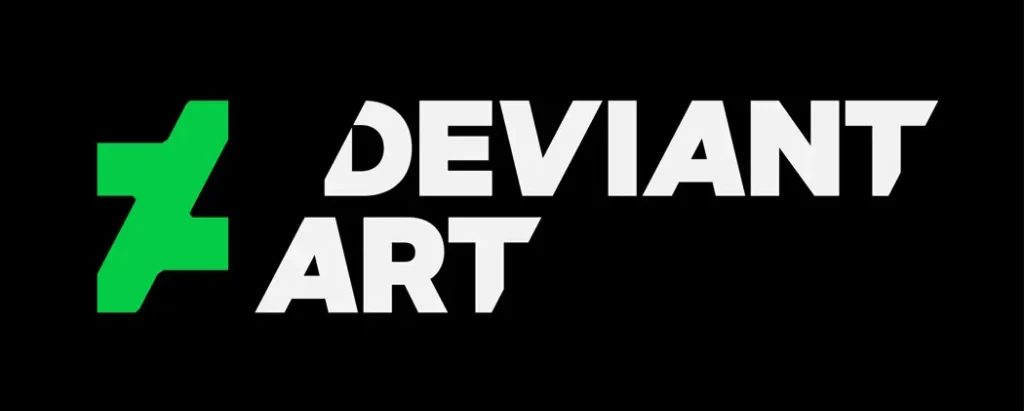
It is an old home for independent artists and now offers a marketplace in which buyers can purchase artwork directly from them.
Pros:
- It’s very popular with art buffs.
- You get direct interaction with buyers.
- No strict approval process—very great for beginners.
Cons:
- It has little reach outside the DeviantArt community.
- Not as well-known as another marketplace for serious art sellers.
Best for: emerging artists and hobbyists that are willing to sell their work to a built-in audience.
10. Scrile Connect—The Best White-Label Art Selling Platform

It is a unique solution for artists to set up a personal art commerce platform instead of being so reliant on other sale spaces. Scrile Connect lets artists and entrepreneurs launch a fully branded store for the sale of AI-generated and digital art.
Pros:
- You have total control over pricing, branding, and customer relations.
- There are monetization choices: subscriptions, one-time sales, and and exclusive memberships.
Cons:
- Takes some doing to set up compared to other market spaces.
- Best suited for those artists who want to run their own online store.
Ideal for: Artists and entrepreneurs looking to build a long-term art career selling AI-generated and digital art. Each of these art selling platforms comes with its own pros and cons depending on the artistic style, experience, and goals the seller has.
Selling AI art, offering prints, or even building your marketplace. There exists a platform that resolves more than one issue your way.
“Scrile Connect is a market leader in the subscription-based content platforms market due to its unmatched flexibility and richness of features. It provides creators with a completely customizable experience where they can develop subscription pages that are an exact reflection of their own brand. The platform accommodates various monetization models, such as tiered subscriptions, pay-per-view content, and one-time purchases, so that creators can adapt their revenue model according to the requirements of their audience.”
— TrialFiles, “The 10 Best Subscription Based Content Platforms”
Take the Leap and Start Selling Your Digital Art
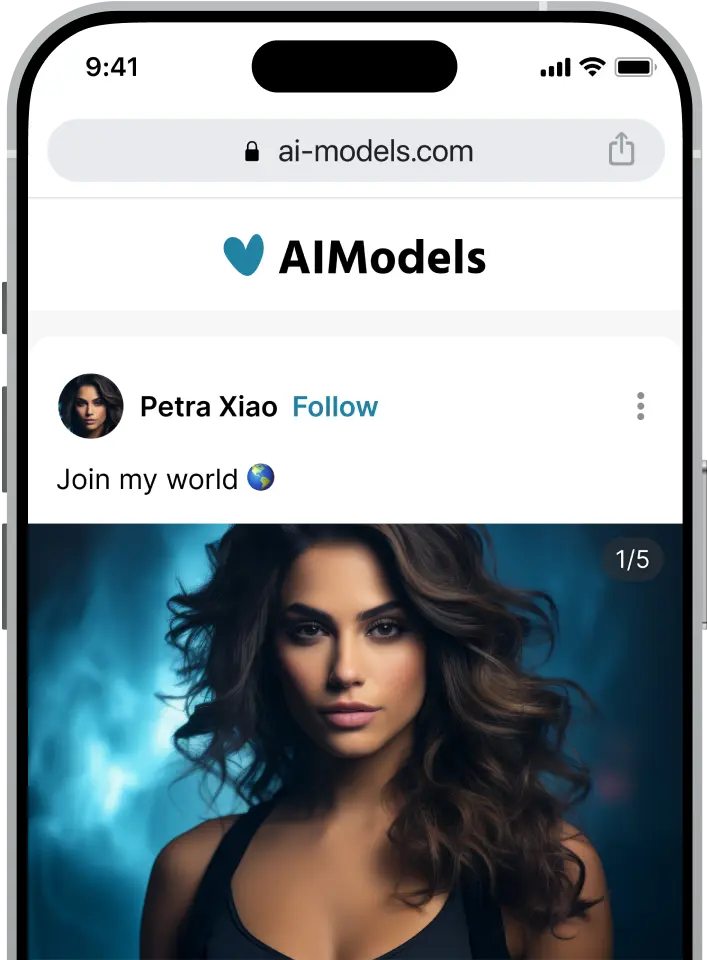
Are you ready to take action and make your mark in the world of digital art? Be it a beginner or a professional artist, Scrile Connect has become a magic solution for creators of any kind.
Today is the day to start your art business by being the one to sell your digital creations through Scrile Connect. It’s time for building your brand and maximizing your earnings.
Find out more about Scrile Connect to get started now!
Final Thoughts: Take the Next Step in Your Art Business With Scrile Connect
To sum up, selling art online has never been more accessible or profitable. With the proper tools, tactics, platforms, and lots of other hard work, you actually can turn your creativity into a successful business.
Whether you’re just starting out and looking for art selling platforms that cater to beginners, or you’re a seasoned artist ready to expand your reach, it’s essential to have a platform that gives you control, flexibility, and the opportunity to build your own brand. That’s where Scrile Connect comes in.

If you wish to get your own branded art marketplace, with the ability to sell AI art, digital works, prints, and so much more, then Scrile Connect is the perfect fit. It allows you to set up your own branded store, manage your own sales, and keep more of your earnings than you would on a traditional third-party platform.
Ready to level up in the art world? Scrile Connect is your go-to platform that makes it so simple to start selling, show off your unique creations, and start building your community of loyal buyers. Get started with Scrile Connect today. Turn your artistic passion into a full-time business!
Read Also
How to Make Money with AI Art – Monetize your artistic skills via online galleries, commissions, and savvy marketing.
Top AI Content Creator Tools – Discover free‑to‑pro solutions to craft standout posts and boost engagement.
Best Art Selling Platforms – Explore top marketplaces for AI art, digital works, and prints to start earning today.
Best Place to Sell AI Art – Compare mainstream sites and niche galleries to monetize your digital creativity.
How to Create a Subscription Website – From hosting to payment models, build recurring revenue and grow your community.
Earn Money with AI – Discover practical ways to profit from AI-driven products and automated services.